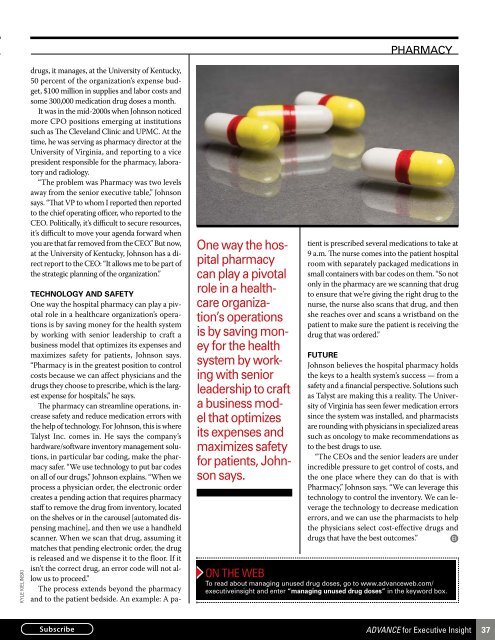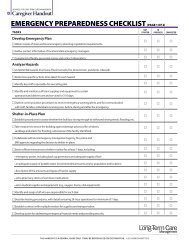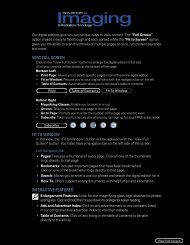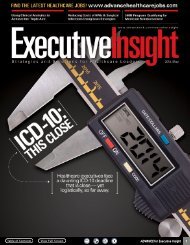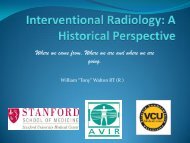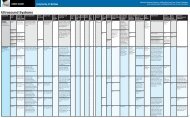1 ADVANCE for Executive Insight
1 ADVANCE for Executive Insight
1 ADVANCE for Executive Insight
- No tags were found...
You also want an ePaper? Increase the reach of your titles
YUMPU automatically turns print PDFs into web optimized ePapers that Google loves.
kyle kielinski<br />
drugs, it manages, at the University of Kentucky,<br />
50 percent of the organization’s expense budget,<br />
$100 million in supplies and labor costs and<br />
some 300,000 medication drug doses a month.<br />
It was in the mid-2000s when Johnson noticed<br />
more CPO positions emerging at institutions<br />
such as The Cleveland Clinic and UPMC. At the<br />
time, he was serving as pharmacy director at the<br />
University of Virginia, and reporting to a vice<br />
president responsible <strong>for</strong> the pharmacy, laboratory<br />
and radiology.<br />
“The problem was Pharmacy was two levels<br />
away from the senior executive table,” Johnson<br />
says. “That VP to whom I reported then reported<br />
to the chief operating officer, who reported to the<br />
CEO. Politically, it’s difficult to secure resources,<br />
it’s difficult to move your agenda <strong>for</strong>ward when<br />
you are that far removed from the CEO.” But now,<br />
at the University of Kentucky, Johnson has a direct<br />
report to the CEO: “It allows me to be part of<br />
the strategic planning of the organization.”<br />
One way the hospital<br />
pharmacy<br />
can play a pivotal<br />
role in a healthcare<br />
organization’s<br />
operations<br />
is by saving money<br />
<strong>for</strong> the health<br />
system by working<br />
with senior<br />
leadership to craft<br />
a business model<br />
that optimizes<br />
its expenses and<br />
maximizes safety<br />
<strong>for</strong> patients, Johnson<br />
says.<br />
Technology and Safety<br />
One way the hospital pharmacy can play a pivotal<br />
role in a healthcare organization’s operations<br />
is by saving money <strong>for</strong> the health system<br />
by working with senior leadership to craft a<br />
business model that optimizes its expenses and<br />
maximizes safety <strong>for</strong> patients, Johnson says.<br />
“Pharmacy is in the greatest position to control<br />
costs because we can affect physicians and the<br />
drugs they choose to prescribe, which is the largest<br />
expense <strong>for</strong> hospitals,” he says.<br />
The pharmacy can streamline operations, increase<br />
safety and reduce medication errors with<br />
the help of technology. For Johnson, this is where<br />
Talyst Inc. comes in. He says the company’s<br />
hardware/software inventory management solutions,<br />
in particular bar coding, make the pharmacy<br />
safer. “We use technology to put bar codes<br />
on all of our drugs,” Johnson explains. “When we<br />
process a physician order, the electronic order<br />
creates a pending action that requires pharmacy<br />
staff to remove the drug from inventory, located<br />
on the shelves or in the carousel [automated dispensing<br />
machine], and then we use a handheld<br />
scanner. When we scan that drug, assuming it<br />
matches that pending electronic order, the drug<br />
is released and we dispense it to the floor. If it<br />
isn’t the correct drug, an error code will not allow<br />
us to proceed.”<br />
The process extends beyond the pharmacy<br />
and to the patient bedside. An example: A papharmacy<br />
tient is prescribed several medications to take at<br />
9 a.m. The nurse comes into the patient hospital<br />
room with separately packaged medications in<br />
small containers with bar codes on them. “So not<br />
only in the pharmacy are we scanning that drug<br />
to ensure that we’re giving the right drug to the<br />
nurse, the nurse also scans that drug, and then<br />
she reaches over and scans a wristband on the<br />
patient to make sure the patient is receiving the<br />
drug that was ordered.”<br />
Future<br />
Johnson believes the hospital pharmacy holds<br />
the keys to a health system’s success — from a<br />
safety and a financial perspective. Solutions such<br />
as Talyst are making this a reality. The University<br />
of Virginia has seen fewer medication errors<br />
since the system was installed, and pharmacists<br />
are rounding with physicians in specialized areas<br />
such as oncology to make recommendations as<br />
to the best drugs to use.<br />
“The CEOs and the senior leaders are under<br />
incredible pressure to get control of costs, and<br />
the one place where they can do that is with<br />
Pharmacy,” Johnson says. “We can leverage this<br />
technology to control the inventory. We can leverage<br />
the technology to decrease medication<br />
errors, and we can use the pharmacists to help<br />
the physicians select cost-effective drugs and<br />
drugs that have the best outcomes.”<br />
<strong>ADVANCE</strong> <strong>for</strong> <strong>Executive</strong> <strong>Insight</strong><br />
37


